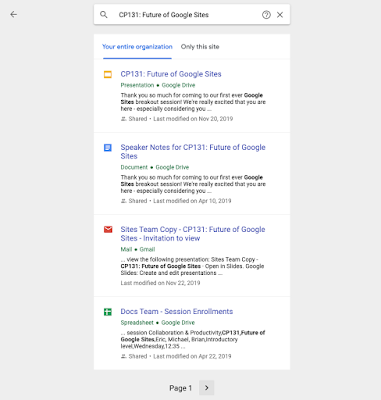What’s changing
You can now enable audit logging for Google Cloud Search APIs for improved tracking of usage data. With deeper tracking, it's now possible to build richer analytics on top of Cloud Search usage to make data driven decisions and improve your user’s search experience.
When enabled, your Cloud Search APIs usage data are logged in a secure way and are easily accessible to you. Some data points that are logged are:
- Method and API details.
- Relevant content of the request and response received.
- IP address and identity (e.g. mail ID) of the caller.
- Response status, etc.
Who’s impacted
Admins and developers
Why you’d use it
Audit logs help you understand how Cloud Search is being used within your organization by answering questions such as which API was called by whom, when, and with what parameters. Additionally, you can also use these logs for troubleshooting or auditing purposes.
Getting started
- Admins: Audit logging is OFF by default. Use this guide to learn more about audit logging in Cloud Search.
- End users: No action required.
Rollout pace
- Rapid Release and Scheduled Release domains: This feature is available now
Availability
- Available to Google Workspace Enterprise Plus and Google Cloud Search customers
- Not available to Google Workspace Essentials, Business Starter, Business Standard, Business Plus, Enterprise Essentials, Enterprise Standard, Education Fundamentals, Education Plus, Frontline, and Nonprofits, as well as G Suite Basic and Business customers







